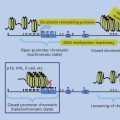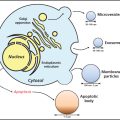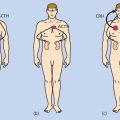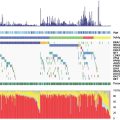Cardinal manifestations of cancer
James F. Holland, MD, ScD (hc)  Waun Ki Hong, MD, DMSc (Hon)
Waun Ki Hong, MD, DMSc (Hon)  Donald W. Kufe, MD
Donald W. Kufe, MD  Robert C. Bast Jr., MD
Robert C. Bast Jr., MD  William N. Hait, MD, PhD
William N. Hait, MD, PhD  Raphael E. Pollock, MD, PhD, FACS
Raphael E. Pollock, MD, PhD, FACS  Ralph R. Weichselbaum, MD
Ralph R. Weichselbaum, MD
Overview
Cancer is asymptomatic at its initiation. Symptoms arise when a conduit is impaired, when cancer cells impinge on nerve fibers causing pain or dysfunction, when secretory products of the tumor cause systemic symptoms such as fever, weight loss, or fatigue, when ulceration and bleeding occur, or upon recognition of a mass. Indeed any symptom that lasts two weeks, even intermittently, could be a symptom of cancer, the great imitator. Cancer always belongs in the differential diagnosis.
Cancer is a singular word that embraces a vast diversity of diseases that can occur in any organ system throughout the animal kingdom. The unique characteristic of cancer is the proliferation of cells of a type different from, if ever so slightly, the normal complement of the organism. The proliferation of cancer cells may be rapid or slow, and the accumulation of cells may be massive or miniscule. The essence of the matter, however, is that aberrant cells, distinct from the ordinary evolution of cell types, appear and accumulate. Thus, a cancer differs from hypertrophy and hyperplasia, which involve normal cells.
A cancer cell does not obey the complex rules of architecture and function that govern the usual placement and behavior of cells within a tissue. The wondrous coexistence of cells and tissues of multiple types that make up the eye, the finger, or the kidney, for example, each with appropriate anatomic location with all connections intact to fulfill their appointed tasks, is part of the miracle we call life. The explanation for this marvelous organization is the field of continuing exploration seeking the messages and the exquisite controls that exist in multicellular organisms.
Cancer is distinguished from other abnormal cellular growths that lead to benign tumors in its characteristic independence from the restrictions present in normal tissues. Benign tumors expand and compress, but do not attack or invade adjacent tissues. Accumulated cancer cells make a tissue that ignores the anatomic barriers of adjacent cell membranes and basement membranes. Through chemical and mechanical means, the cancer cell insinuates itself between and into the space of the normal cells, killing them by chemical and physical means, the grand usurper. Even though the placenta in mammals shows this behavior, there is self-limitation in location and in survival of the placental invasion. Although leukocytes normally extravasate and permeate tissues, they do not share the other characteristics of cancer. The cancer cell is partially or absolutely insensitive to such normal constraints and may continue its invasiveness indefinitely.
Upon reaching a circulatory conduit, either lymphatic or capillary vessel, a process that may not be entirely haphazard, cancer cells often penetrate the wall as part of their invasive behavior. They then may be carried by the lymphatic or the venous circulation to remote sites where the possibility of adherence, extravasation, and colonization can occur, establishing metastases. In the absence of an intervening event, and given enough time, with few exceptions, the cancer process, as described, can lead to such anatomic or functional distortions that death ensues.
The cancer process does not start with a fully invasive cancer cell. A disorder in molecular instructions for protein synthesis is the common precursor lesion, nearly always because of qualitatively or quantitatively aberrant ribonucleic acid (RNA) messages transcribed from nuclear deoxyribonucleic acid (DNA). This occurs because of a mutation of the DNA, or because of overexpression of particular genes that encode proteins important as catalysts in pathways for stimulating growth, or because of under expression of genes whose coded proteins control and inhibit growth. Portions of genes may be lost, translocated, or amplified. Indeed, entire chromosomes may be deleted, replicated, or fused in abnormal ways. All such distortions of DNA can give rise to abnormal or unbalanced RNA messages, leading to qualitative or quantitative differences in proteins that result in disordered cellular function. Sometimes the functional abnormality is so extreme as to be lethal to the cell, initiating the suicidal mechanism of apoptosis. In other instances, the functional abnormality results in disease. Some of these diseases display the characteristics of cancer. Mutation, overexpression, and underexpression of genes can result from a wide spectrum of intrinsic and extrinsic causes, with various pathways that lead not to one final common pathway, but by several converging routes to cells with the phenotypic characteristics of cancer. When these cells are limited to an epithelial layer above the basement membrane, they are called carcinoma-in-situ or intraepithelial neoplasia. Similar changes probably occur, but are more difficult to recognize, in the mesenchymal tissues. Even cancer cells that do not penetrate the basement membrane, and thus lack one of the cardinal features of true cancer, represent a long series of antecedent molecular abnormalities that eventually lead to this optically recognizable cellular change. Furthermore, these evolving cancer cells are the common, if not the exclusive, precursor of invasive cancer.
In their initial stages, as proliferating cells accumulate, cancers are almost always asymptomatic. Cancers cause symptoms as they advance as a consequence of their mass, because they ulcerate on an epithelial surface, or because of change in function of the affected structure or organ. Nearly all the symptoms that can be caused by cancer can also be caused more commonly by noncancerous diseases. The astute clinician must include cancer in the differential diagnosis of virtually every symptom, albeit a benign disease may usually explain it. Doctors never diagnose diseases they do not think of. Cancers occur at any age. A longer life span provides greater opportunity for intrinsic organic events or an encounter with environmental carcinogens, however, and greater opportunity for initial DNA mutations to be fully realized as invasive cancers. Thus, age is the principal risk factor for most, but not all, cancers.
Common symptoms such as sore throat, runny nose, or a chest cold can sometimes be a result of cancers of pharynx, sinuses, or bronchi, respectively. Indeed, patients with these cancer diagnoses usually have been treated, often repeatedly and for extended periods, for the benign disease because cancer was not considered in the differential diagnosis and appropriate observations were not made. Cancer symptoms such as diarrhea, constipation, or mild pain often seem commonplace. Cancer symptoms may be intermittent, with spontaneous temporary improvement, a phenomenon that is usually misinterpreted by patients and often by physicians as evidence against the diagnosis of cancer. In fact, recurrent appearance or chronicity of a symptom which in short duration is characteristic of a common benign disease markedly heightens the possibility of an underlying dysfunction caused by cancer.
Cancers cause their symptoms by a few readily understandable mechanisms.
Occlusion of an essential conduit, partial or complete, can be caused by tumor. A tumor mass grows to such size that it partially or completely occludes an essential conduit. Classic presentations are cancer of the bronchus where partial bronchial occlusion causes cough, diminishes ciliary clearance of secretion, and sometimes leads to bronchopneumonia. Complete bronchial occlusion leads to atelectasis and chronic pneumonia. Compromise of the esophageal lumen by tumor mass or muscular dysfunction resulting from infiltration causes dysphagia, which, in its early presentation, is far too often attributed to benign cause. Gastric tumors rarely cause complete obstruction, but often impair normal gastric motility. This defect may lead to easy satiety, anorexia, indigestion, and nausea. Decrease in caliber of the transverse and descending colon, sigmoid, or rectum by tumor mass can lead to change in bowel habit, including diminished caliber of stools, constipation, and bouts of cramps and/or diarrhea from peristaltic efforts of the proximal gut. Compromise of the lumen of the common bile duct by carcinoma of the head of the pancreas or of the bile duct itself produces obstructive jaundice, not infrequently after minor antecedent digestive complaints or unexplained pruritus ascribed to accumulated bile salts.
Ureteral obstruction by compression from retroperitoneal masses or bladder tumor leads to hydroureter and hydronephrosis, often asymptomatic or revealed by vague discomfort in flank or loin, or by urinary tract infection. Bilateral obstruction leads to uremia with its protean symptomatology. Compromise of the urethra as it courses through the prostate causes diminished urinary stream, inadequate bladder emptying, frequency, urgency, nocturia, and when severe, obstructive uropathy and uremia.
Tumors in the cecum and ascending colon and in the urinary bladder, because their content is not solid and because of greater luminal diameter, uncommonly cause obstruction, but may distort normal function enough to alter bowel or urinary habits.
A mass discovered by palpation or X-ray may be a presenting finding, as in breast carcinoma. Dysfunction from replacement of the substance of a parenchymatous organ by tumor is a subset of mass presentation. The classic example is primary or, more commonly, metastatic brain tumor, which becomes identified by abnormal brain function. Seizure or paralysis, sensory or coordination abnormality, memory defect, and personality change may all be consequences of space occupation.These changes may occur not only because a specific area of the brain is affected but also because of increased intracranial pressure as the calvarium is not distensible.Similar dysfunction of the spinal cord with distal motor and sensory phenomena can reflect space occupation by a mass within or impinging on the cord or cauda equina. Hepatic dysfunction from space occupation by primary or metastatic tumor, often with related intrahepatic bile duct compression, can present as jaundice. Sometimes the liver enlarges to enormous size, causing digestive disorders, pain, and a visible and palpable mass in the upper abdomen. Thyroid cancer usually presents as a mass, and uncommonly this results in hypothyroid laboratory values, but rarely in clinical hypothyroidism.
A sarcoma of the soft tissues usually presents as a palpable mass. Testicular cancer ordinarily presents as a mass: the testicle may only be slightly larger than its fellow, but harder and heavier in the examiner’s hand. Ovarian cancer may be detected as an adnexal mass.
A new lump or mass, or a changing one, requires exclusion of cancer based on clinical examination, imaging studies, or a biopsy. Most lipomas, and self-discovery of the xiphoid, are two types of lumps that can usually be dismissed on clinical grounds. A dominant breast mass, or even a questionable one, requires assessment by appropriate imaging—often by cytologic or histologic means. A thyroid nodule, an enlarged lymph node that is hard, a node that remains enlarged without infectious explanation for 2 weeks, a skin mass with the characteristics of melanoma or carcinoma, especially if ulcerated, and a new subcutaneous or abdominal or scrotal mass all require consideration of cancer and appropriate diagnostic study.
Ulceration on the skin or on an epithelial surface can lead to blood loss and occasionally can serve as a portal of infection. Skin ulcerations are commonly ignored for weeks or months and are often interpreted as a common injury of unremembered origin that did not heal. Bronchial ulceration results in hemoptysis, usually blood-tinged sputum, and only rarely massive bleeding. Any of the upper alimentary canal cancers can ulcerate and bleed. Usually the bleeding is slow, intermittent, and silent, leading to iron-deficiency anemia. Hematemesis or massive melena is uncommon. Carcinomas of the cecum and ascending colon often present with the symptoms of anemia because of ulceration and bleeding.
Carcinoma of the bladder and carcinoma of the kidney commonly manifest hematuria. Sometimes this is fortuitously discovered as a microscopic or chemical abnormality on routine urinalysis. Clots from renal bleeding can lead to ureteral colic. Hematuria less often heralds prostate cancer, but hematospermia implies prostate disease, benign or malignant, because carcinoma of the seminal vesicle is exceedingly rare.
Endometrial carcinoma most often presents as postmenopausal vaginal bleeding, although any vaginal bleeding outside the normal menstrual cycle is worthy of suspicion. Contact bleeding during intercourse is suggestive of cervical ulceration, most commonly a result of cancer.
Pain is commonly thought of as a surrogate for early cancer, although this is mistaken. Most cancers are initially painless. Pain occurs when a tumor invades, presses on, or stretches a nerve, or when proximal smooth muscle contracts in an attempt to bypass an obstructed or dysfunctional distal segment of a conduit. Most pains of short duration that disappear are not caused by cancer. Cancer must enter the differential diagnosis, however, when pain is recurrent or persistent without ready explanation, or atypical, or present when there is no other recognizable cause. New pain, not necessarily severe, must be carefully interpreted. Abdominal pain and skeletal pain distinct from joint symptomatology deserve particular attention and early rather than late studies to establish a cause. Pain in a breast mass does not exclude its being cancer.
Weight loss may first indicate an unsuspected cancer, and when combined with grumbling low-grade discomforts, malaise, and fatigue is a cause for particular scrutiny. A wide variety of other diseases can also cause these common symptoms, but cancer should not be at the bottom of the list. If a diagnosis is not established after initial studies, a second complete history and physical examination after a short interval is imperative.
Effusion caused by cancer in the pleural, pericardial, or peritoneal cavities can lead to dyspnea and discomfort. Increasing abdominal girth, often with malaise, oliguria, constipation, and weight gain, is a cardinal symptom of ascites. In the thorax, bronchogenic carcinoma, mesothelioma, metastatic breast or ovarian cancer, and primary carcinoma of serous membranes are the frequent causes of malignant effusion. Ascites as a presenting symptom is characteristic of ovarian cancer and cancer of the serous membranes. Pancreatic cancer, mesothelioma, metastatic carcinoma on the peritoneum and in the liver and several non-neoplastic diseases also enter the differential diagnosis.
Perforation caused by invasion of the wall of a hollow viscus causes pain, usually sudden. Cancer is not suspected in most cases when this rare event occurs. Pneumothorax from perforation of the pleura by a primary or metastatic pulmonary tumor is an uncommon emergency. Fistulization of gastric cancer into the transverse colon leads to vague abdominal discomfort, which is misinterpreted or neglected, and then sudden onset of diarrhea with prominent gastrocolic reflex. Appendiceal cancer, albeit a rare tumor, frequently presents as acute appendicitis with peritonitis because of rupture. Perforation of the colon is more frequently caused by diverticulitis than by colon cancer. Ruptured ectopic pregnancy due to choriocarcinoma has been reported. Tracheoesophageal fistulization in the course of esophageal or bronchogenic cancers is almost always late in the course.
Fever of unknown origin that persists for more than 1 week must include cancer among its possible causes. Hodgkin disease, other lymphomas, acute leukemia, cancer of the kidney, and cancers of the liver are high on the list of neoplasms that can cause fever. Certain cancers predispose to infections because of ulceration, obstruction, or disordered leukopoiesis.
Endocrine hyperactivity syndromes may occasionally turn out to be caused by cancer. Hyperadrenalism, sometimes first manifest as hirsutism, can indicate adrenal cancer. Cushing syndrome can also result from small cell carcinoma of the lung. Hyperparathyroidism rarely comes from parathyroid cancer but can be mimicked by ovarian cancer and squamous carcinomas. Tumors that secrete thyroid hormone, estrogens, insulin, glucagon, aldosterone, epinephrine, or norepinephrine are often benign tumors of the parent endocrine organ, but cancer must always be considered. Functional neuroendocrine tumors may secrete serotonin and other vasoactive principles that cause the carcinoid syndrome.
Paraneoplastic syndromes may be early symptoms of cancer. Myasthenia gravis, Raynaud syndrome, hypertrophic osteoarthropathy and clubbing, and refractory anemia may herald thymoma, myeloma, lung cancer, and hematologic dyscrasia (and thymoma), respectively. A diligent search must be made for these and other causes.
Absence of cardinal manifestations is usual for cancers detected by screening by Papanicolaou smears, human papillomavirus (HPV) identification, mammography, prostate-specific antigen determinations, colonoscopy, computed tomography, lung scanning, and total skin examination. Asymptomatic cancers discovered by these methods are generally far less advanced than those that cause symptoms. Occasionally, routine chemical or hematologic laboratory data in asymptomatic patients suggest cancer or leukemia. Such incidental discovery reinforces the proposition that early in their pathogenesis most cancers are asymptomatic.
Predisposition to cancer characterizes a broad spectrum of diseases, exposures, and lifestyle behaviors. Patients who have had inflammatory bowel disease, HPV infection of the cervix, hepatitis B or C infection; those with prior radiation exposure, earlier treatment with alkylating agents, anthracyclines, or podophyllotoxin derivatives, or specific environmental exposures such as asbestos; those who have smoked, heavily imbibed alcohol, or sun worshipped, and those with a strong family history of cancer, particularly those neoplasms known in part to be heredofamilial all are in groups that deserve special consideration for the particular cancers that occur in them at a higher frequency than normal.
Cancerophobia does not predispose to cancer. Depression occurs more frequently with carcinoma of the pancreas than with gastric carcinoma, however, and may be an early symptom of pancreatic neoplasia.
The present
By the time cancer is diagnosed, it is often past the stage of easy curability. Frequently, the earliest symptoms were ignored or rationalized. Technical improvements in imaging, early surgery, and hormonal, chemotherapeutic, and immunologic treatment have decreased mortality from breast cancer; viral discovery, cytology, and early treatment have diminished cervical cancer mortality; and colonoscopy and polypectomy have decreased colon cancer mortality. Other screening programs portend similar promise by diagnosing cancers before they become symptomatic. Cancer has replaced syphilis as the great imitator. Many symptomatic patients with cancer are still curable with today’s therapies. Delay cannot possibly help, however, once an early symptom occurs that eventually proves to be caused by cancer. Inclusion of cancer as a possibility in every differential diagnosis can save lives.
The future
The expansion of diagnostic techniques based on genomics and proteomics augurs well for earlier identification of cancers. Not only is it reasonable to believe that clinical diagnosis will be accelerated by laboratory methods, but genomic and proteomic discoveries are likely to alter our understanding of the cancer process as it occurs in humans. It is hoped that the consequent impact of this knowledge on cancer prevention and on cancer therapy will be revolutionary. The cardinal manifestations of cancer may then become principally of historical interest, while laboratory abnormalities are instrumentally detectable well before clinical presentation. Indeed, departure from a population norm may be less significant than departure from an individual’s prior proteomic profile taken as a baseline during health. If such a blue-sky future ever unfolds, public understanding and compliance will still be critical determinants of cancer prevention and early diagnosis.






